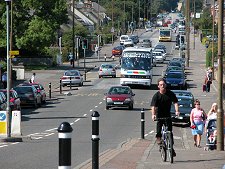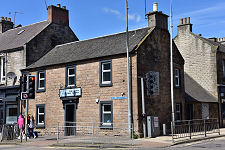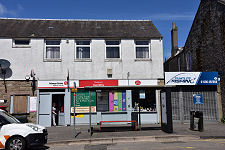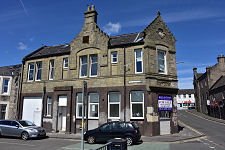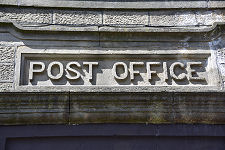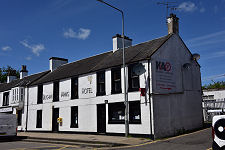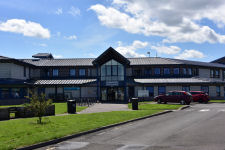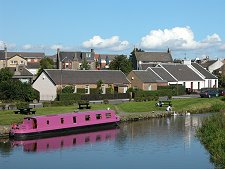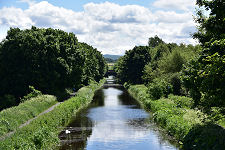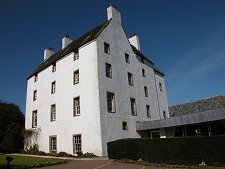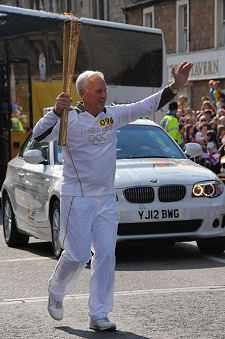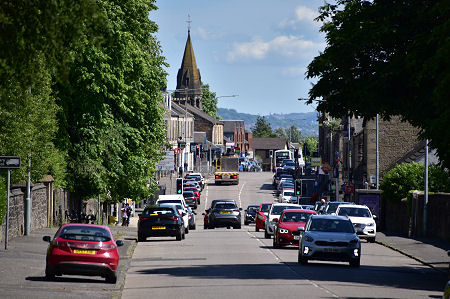 Broxburn's East Main Street |
North of the M8 Motorway and along the line of the old main road from Edinburgh to Glasgow lies what is often loosely called Broxburn, but in practice includes the once distinct settlements of Broxburn to the east and Uphall to the west. Uphall is often confused with Uphall Station, on the Edinburgh to Glasgow via Bathgate railway line to the south, which is actually part of Livingston's built up area: so here we use "Broxburn" to describe the settlement lying along the A889 and bypassed by the A89 and the M8. Clear so far?
The confusion gets worse, though. Broxburn and Uphall both divide the old main road up into stretches called East Main Street and West Main Street. This means that at some point Broxburn's West Main Street blends seamlessly into Uphall's East Main Street, before becoming Uphall's West Main Street, west of the junction with the road to Ecclesmachan. At least it's all "Main Street" in one form or another.
The two component parts have very different origins. Uphall is ancient, while Broxburn dates back only to the 1800s. The beginnings of Uphall are best seen today by taking a short stroll uphill from the traffic lights in its centre along the road towards Ecclesmachan.
On the right is the church of Strathbrock St Nicholas. This is a remarkably ancient church, whose nave dates in part back to the 1100s. The name Strathbrock has only been attached to the parish quite recently, but the name itself is an ancient one, meaning valley of the badgers, the same origin as the Brox Burn that flows through it. (Continues below image...)
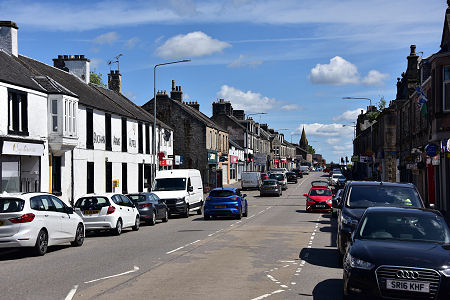 Another View of East Main Street |
Not far away, and still in Uphall, is the Houston House Hotel, the next major landmark on the area's history. This started life in about 1600 as a tower house built for Sir Thomas Shairp. It was considerably enlarged in the 1700s, then in 1970 was converted to use as a hotel. Unusually, the new parts added to accommodate additional rooms at the time really complement the original building. The hotel has its own golf course, while nearby is the Uphall Golf Club, dating back to 1895.
Broxburn only starts to come into the story in the early 1820s with the coming of the Union Canal and then the railway (a little to the south) in 1849. But the real transformation came with the discovery in 1858 that Broxburn and the surrounding area was built on layers of rich oil bearing shales. This allowed Broxburn to play a significant role in West Lothian's remarkable oil boom of the late 1800s, based on mineral oil extracted from shale and coal.
The process produced crude oil, paraffin oil, paraffin wax, naptha, gas, coke, and ammonia: and it also produced a bright pink spent shale which was simply piled up in huge "bings", some of which are still visible around Broxburn today.
By 1862 the Broxburn Shale Oil Company was the largest player in the industry in the town, employing 700 people at their refinery. By 1901 they employed 2,000 people. Many other companies were also extracting oil in the area, leading to some describing Broxburn as "Shaleopolis". The industry began to decline in the early 1900s in the face of competition from directly extracted crude oil, first from the USA, and then from elsewhere including the Middle East.
The West Lothian oil industry finally ground to a halt in the 1950s. It has been estimated that in a century of extraction from 1850, only some 20% of West Lothian's total reserves of some 200 million tonnes of shale was extracted. The rest was left in place because of the changing economics of its use. Broxburn Oil Works, on the north side of the town, was cleared away to be replaced by an industrial estate.
For somewhere now bypassed twice, first by the A89 as early as the 1920s and later by the M8, Broxburn has more of interest than you might expect. Its core lies along its East Main Street, flanked by shops housed in stone buildings, many dating back to the late 1800s. The attractive Green Tree Tavern is rather older, dating back to around 1800 and probably built to service the traffic on the Edinburgh to Glasgow road. Broxburn is also home to a number of imposing and attractive churches. The most striking is the Church of St John Cantius & St Nicholas, framed by its beautifully hedged approach.
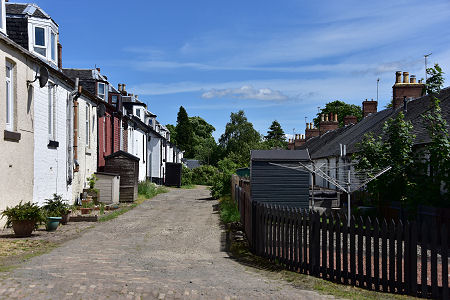 Rows of Shale Miners' Cottages |
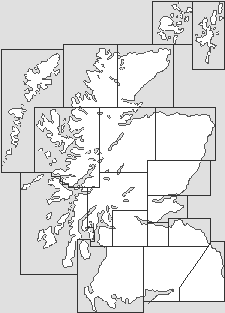
|
|
|
Visitor InformationView Location on MapWhat3Words Location: ///sliding.empty.servicing |
 Strathbrock St Nicholas |
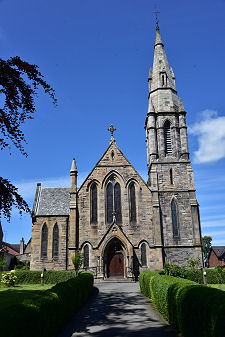 St John Cantius & St Nicholas |
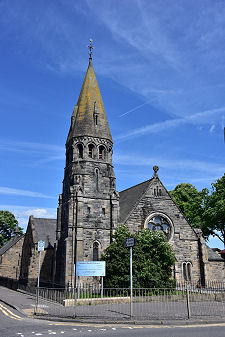 Broxburn Parish Church |
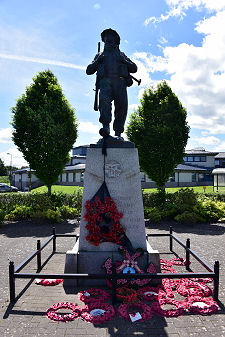 War Memorial |
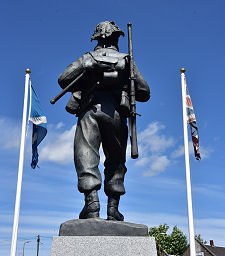 Rear View of War Memorial |
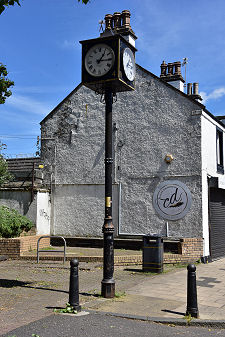 Clock in Broxburn |
